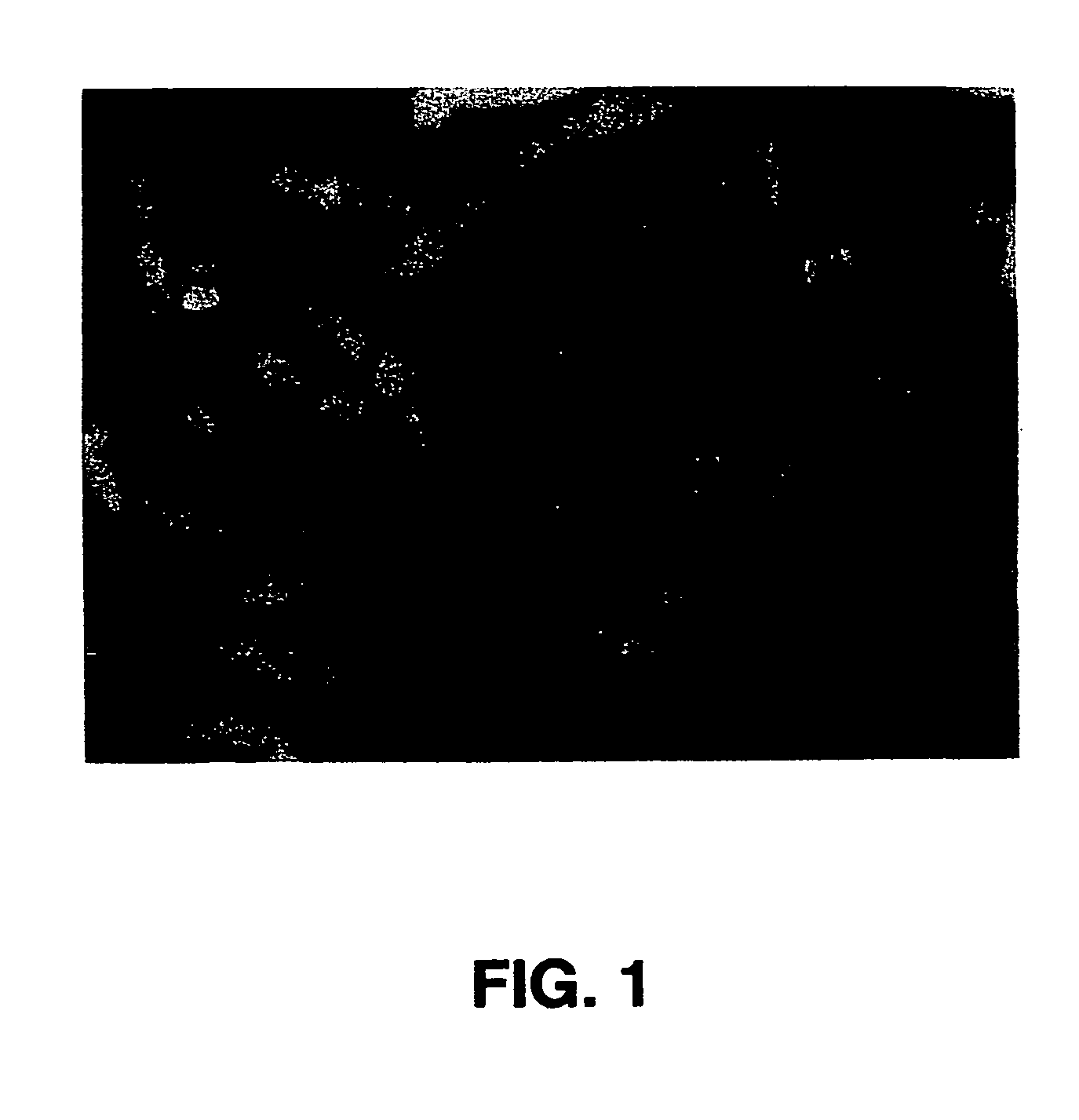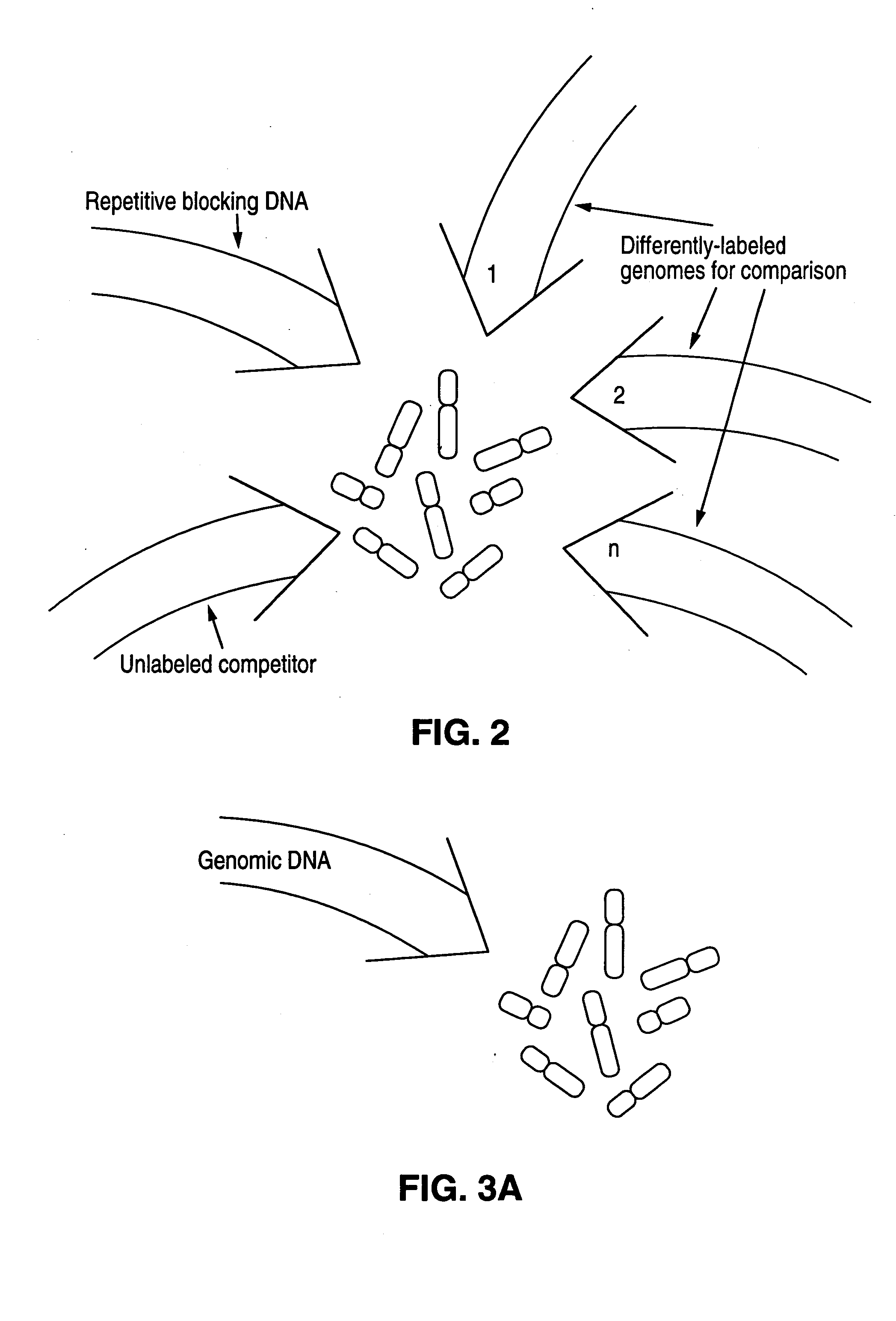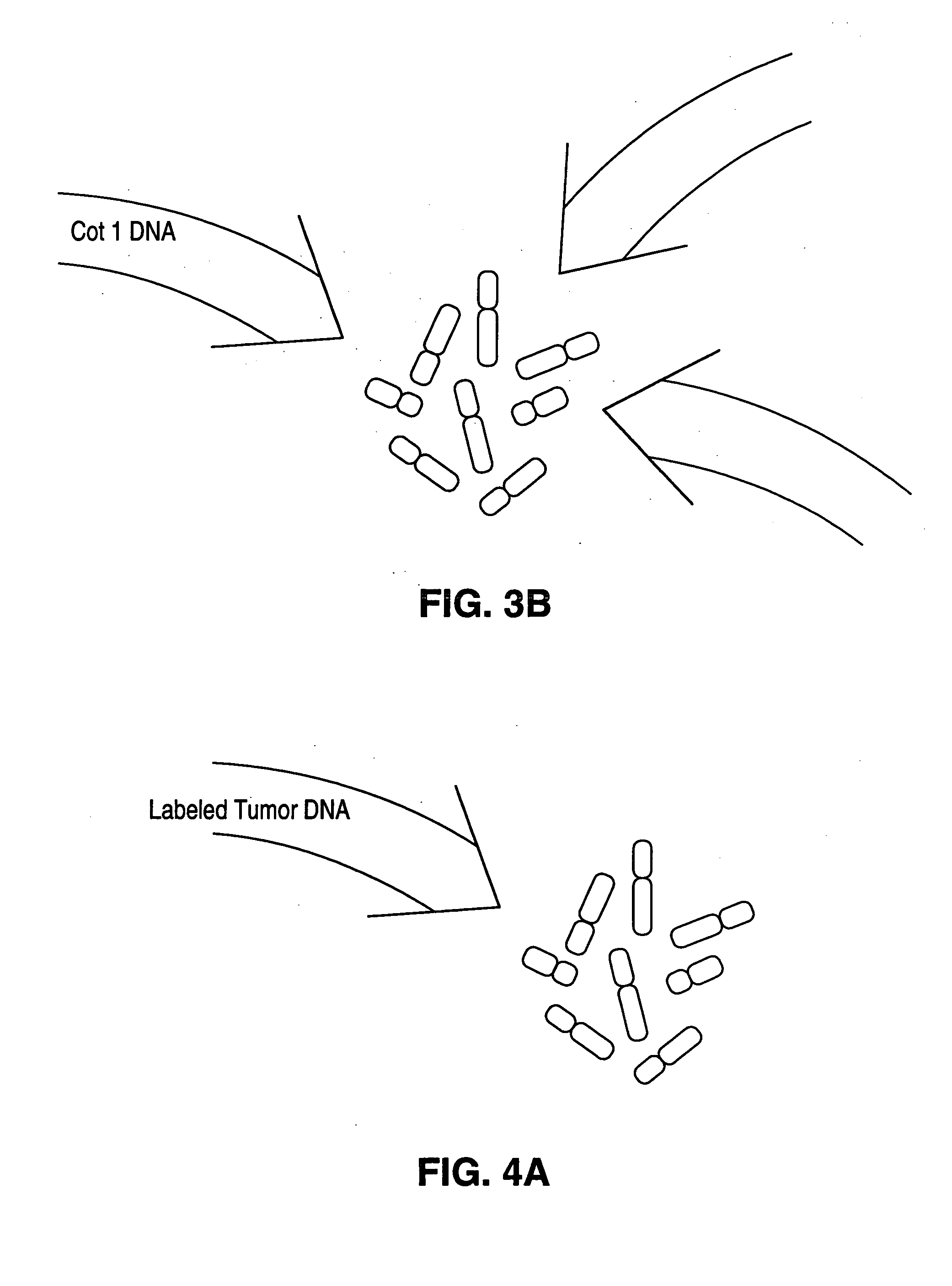Comparative genomic hybridization
a genomic hybridization and comparative technology, applied in the field of cytogenetics, can solve the problems of serious mental and physical defects, inability to visualize interphase chromosomes, and fetal death, and achieve the effect of improving the detection sensitivity
- Summary
- Abstract
- Description
- Claims
- Application Information
AI Technical Summary
Benefits of technology
Problems solved by technology
Method used
Image
Examples
example 1
DNA from Breast Cancer Lines Hybridized to Normal Metaphase Spreads
[0188] In this Example, methods of this invention to analyse genomes by Comparative Genomic Hybridization (CGH) are exemplified by hybridizations of breast cancer cell lines to normal metaphase spreads. The target metaphase spreads were pre-hybridized with unlabeled human placental DNA to block the high copy repeat sequences. In this representative example, the hybridization mixture containing the extracted labeled DNA from the cell lines contained unlabeled, repeat-enriched Cot-1 blocking DNA [obtained from Bethesda Research Laboratories (BRL), Gaithersburg, Md. (USA].
[0189] The experiments outlined below include in the hybridization mixture for the subject genomes, that is, the breast cancer cell line DNAs, chromosome-specific repeat sequence probes and chromosome-specific painting probes. Those probes labeled with biotin were included as an adjunct for identifying chromosomes in the metaphase preparations. The e...
example 2
[0207] Hybridizations with two different labeled subject DNAs as schematically outlined in FIGS. 6 and 7 were performed. One of the labeled subject DNAs hybridized was a cell line DNA as described in Example 1 and similarly labeled. The other labeled subject DNA was human genomic DNA labeled with biotin-14-dATP.
[0208] The protocols were essentially the same as in Example 1 except that no chromosome-specific reference probes were used, and the same amount of the labeled human DNA as the labeled cell line DNA, that is, 60 ng, was hybridized. Of course, reference probes could be added to the hybridization mixture, but they need to be differently labeled to be distinguishable.
[0209] The results showed the normal DNA with a red signal and the cell line DNA with a green signal. The green to red ratios were determined along each chromosome. Amplification was indicated by an area where the signal was predominantly green whereas deletions were indicated by more red signals than in other ar...
example 3
Copy Number Karyotypes of Tumor DNA
[0214] In the representative experiments of CGH in this example, biotinylated total tumor DNA (cell line and primary tumor DNA) and digoxigenin-labeled normal human genomic DNA are simultaneously hybridized to normal human metaphase spreads in the presence of unlabeled blocking DNA containing high-copy repetitive sequences, specifically unlabeled Cot-1 blocking DNA [BRL, Gaithersburg, Md. (USA)]. The following paragraphs-detail the procedures used for the representative CGH experiments of this example.
[0215] DNAs used in this example were labeled essentially as shown above in Example 1. DNAs were labeled with biotin-14-dATP or digoxigenin-11-dUTP by nick translation [Rigby et al., supra; Sambrook et al., supra]. The optimal size for double stranded probe fragments after labeling was 600-1000 bp.
Pretreatment of Metaphase Spreads:
[0216] Lymphocyte metaphase preparations were denatured, dehydrated and air dried, treated with Protei...
PUM
 Login to View More
Login to View More Abstract
Description
Claims
Application Information
 Login to View More
Login to View More - R&D
- Intellectual Property
- Life Sciences
- Materials
- Tech Scout
- Unparalleled Data Quality
- Higher Quality Content
- 60% Fewer Hallucinations
Browse by: Latest US Patents, China's latest patents, Technical Efficacy Thesaurus, Application Domain, Technology Topic, Popular Technical Reports.
© 2025 PatSnap. All rights reserved.Legal|Privacy policy|Modern Slavery Act Transparency Statement|Sitemap|About US| Contact US: help@patsnap.com



